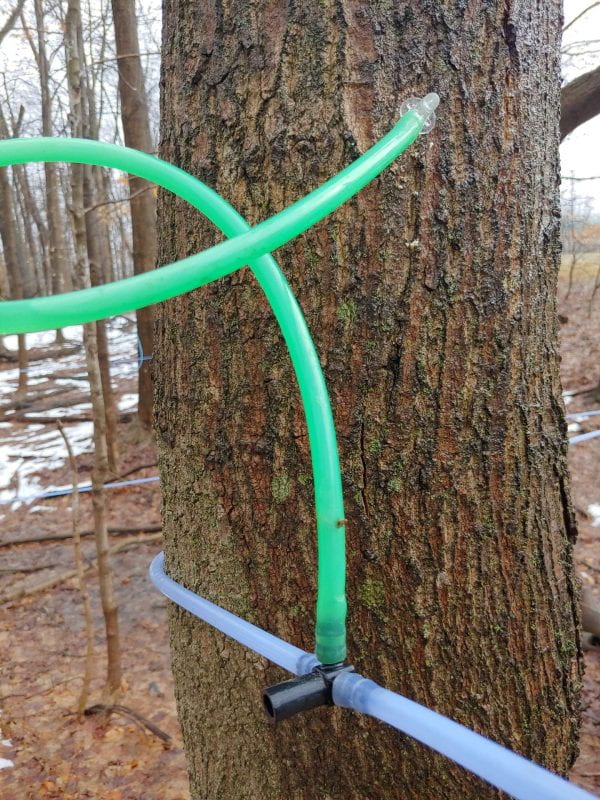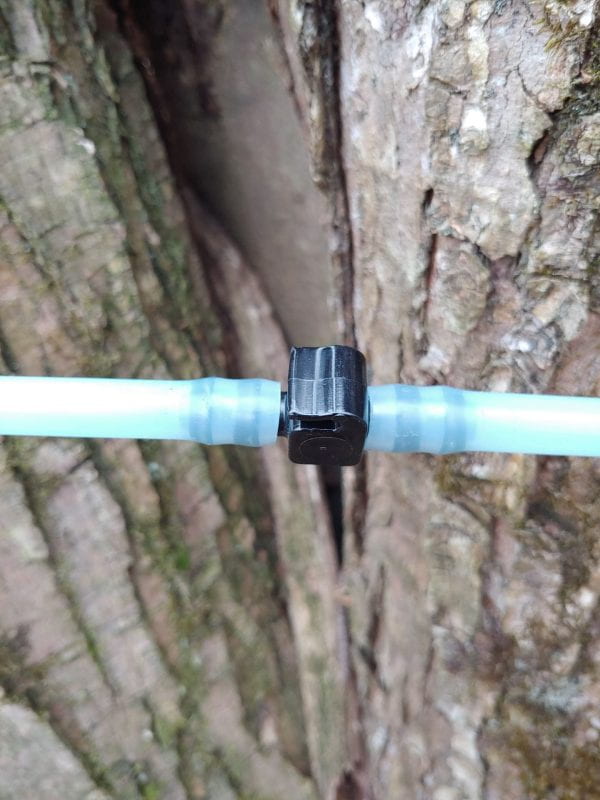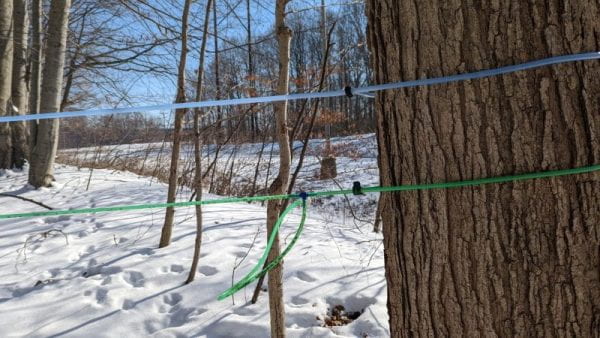The leaves have changed and have mostly fallen from the trees. In some corners of Ohio, the first snow has already fallen. For maple syrup producers, that means the push to get ready for a new season is upon us. This is the best time of year to walk through your entire operation and systematically appraise your operation. Now is the time to walk your sugarbush with a notebook in hand. This assessment process allows you to locate the little things that make a big difference when the sap starts flowing.
Begin by looking at the most logical place first – your trees! What condition are the trees in? Are they healthy? Did the June storms cause wind damage to the crowns? The health of the trees will determine the number of taps per tree, and to some extent, the depth of your taphole. If trees appear stressed, consider tapping a bit shallower (1.5 inches) rather than the full 1.75” or 2” depth. It is not unusual to rest a tree for a season, allowing it to overcome obvious stressors.
Now reflect on your tubing system’s performance the very first year it was installed. Compare that year to the way your system performed last year. Have you noticed a drop-off in performance? It is easy to blame a poor season on the weather; in reality, the cause could be the age of your system and some neglected repairs. For many producers, the first inclination is run out into the woods looking for squirrel chews and start repairing lines. Do not get me wrong, that is important, but it is just one stage of a more holistic leak detection process. The first order of business should be to inspect the lines for more systemic degradation and disrepair. I hope that everyone is starting every season with all new spouts?! However, your assessment should look deeper still.
When was the last time you changed the drops? How long are the drops? Are they long enough to allow you to reach around the tree? Thirty-two inches is a good starting point for drop length in established systems. What condition are your tees in? Bad tees lead to micro leaks that sometimes are worse than squirrel chews because they are harder to locate and might be ignored an entire season. What condition are your laterals? Do they need to be replaced? Are you noticing a mold buildup in the lines? Are your lines patched together because of multiple repairs and damage? When you replace laterals, it is a good time to look at the overall layout of the lateral system? Count your taps on each lateral to determine if one is overloaded. Remember, any given lateral should only be carrying 5 to 7 taps. Also look at the slope of each lateral. Is it running straight and tight and downhill for best performance? What about your saddles, are they leaking? Old saddles, just like old tees, need to be replaced on a regular basis – at least every 5 years. Old saddles are often one of the major causes of leakage in maple tubing systems.
The next area of concern is the mainlines. Ultraviolet light and wind damage are major causes of stress on mainlines. Mainlines are good for 10 to 15 years, but eventually they must be replaced. Yes, that is an expensive project! However, the benefits outweigh the cost. Installing new lines also allows you to remove damaged and unwanted trees during the repair. Sugarbush stand improvement is important as it will improve the overall health and productivity of your sugarbush in the long-term. Hazard trees, such as standing dead ash, should also be dealt with during a mainline replacement project.
It is easy to see how performing a pre-season assessment of your tubing system can be beneficial. And that is just the tubing system! After you walk your sugarbush – clipboard in hand – go back to the sugarhouse and develop an improvement plan. What must you buy? In what quantity? When will it arrive? Are their supply chain delays? Rank everything you have found in order of importance and start chipping away at your list – sap season will be here before you know it!



